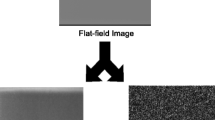Abstract
Stenter lets the health care worker order an X-ray that is produced as a computer image rather than on flat film. The health care provider can be in any location with the correct equipment, and view the digital image. The dimensions of this discussion are extensive. The cost savings because of reduced media and storage cost is substantial. Health care quality can be improved because of the ability to obtain consultation via telemedicine and the enhanced ability to track medical problems over time via trends. The major downside is the limited cost imbursement system to pay for technology. Unfortunately, this may impact on the improved quality of care. In simple terms someone needs to pay for the technology and the quality of health care needs to be maintained or improved. The real cost to the health care systems needs to be correctly calculated and inappropriate charging kept to a minimum. Specific costs need to be kept in mind and the first is the cost for new staff or staff training. The number of health care providers that are able to read the X-ray can be enlarged remembering that only American Board Certified Radiologists are allowed to give the final recommendation. How do we view the cost of missing something? It could be argued that this risk will be reduced because of improved technology for obtaining the digital X-ray and improved enhancement software. One way to view this situation is to include technology, management, and organization. The cost and benefits occur through the interplay of all three dimensions. The development of digital imaging hardware and artificial intelligence software will demand change in the management and organization. The organization will require changes in its design to accommodate the technology as to support and resources. Management will evolve to include methods for control and monitoring this technology. Business processes and standard operating procedures will change to integrate the technology into the organization in the most effective and efficient manner.
Similar content being viewed by others
References
Hatcher, M., and Heetebry, I., Information technology in the future of health care. J. Med. Syst. 28(6):673–688, 2004.
Guler, N. F., and E. D. Ubeyli, Theory and applications of telemedicine. J. Med. Syst. 26(3):199–220, 2002.
Clemmer, T. P., The role of medical informatics in telemedicine. J. Med. Syst. 19(1):47–58, 1995.
Grams, R., Morgan, G., Yu, F. S., Zhang, D., Zhang, G., Iddings, E., Fiorentino, R., and Broughton, H., Medical knowledge systems: Applications to telemedicine. J. Med. Syst. 19(2):165–170, 1995.
Falas, T., Papadopoulos, G., and Stafylopatis, A., A review of decision support systems in telecare. J. Med. Syst. 27(4):347–356, 2003.
Zhao Y., Nakajima, S., and Juzoji, H., On site investigation of the early phase of bhutan health telematics project. J. Med. Syst. 26(1):67–77, 2002.
Bashshur, R., and Grigsby, J., Position paper: Telemedicine effects: Cost, quality, and access. J. Med. Syst. 19(2):79–80, 1995.
Mun, S., Levine, B., Cleary, K., and Dai, H., Deployable teleradiology and telemedicine for the US military. Comput. Methods Programs Biomed. 57:21–27, 1998.
Vastenaeken, Gl., Filmless cardiac imaging: Motion or commotion? The Int. J. Cardiovasc. Imaging 14(Suppl 1):19–22, 1998.
Szot, A., Jacobson, F., Munn, S., Jazayeri, D., Nardell, E., Harrison, D., Drosten, R., Ohno-Machado, L., Smeaton, L., and Fraser, H., Diagnostic accuracy of chest X-rays acquired using a digital camera for low-cost teleradiology. Int. J. Med. Inform. 73:65–73, 2004.
Kobayashi, S., Goudge, M., Makie, T., Hanada, E., Harada, M., and Nose, Y., A filter that prevents the spread of mail-attachment-type trogan horse computer worms. J. Med. Syst. 26(3):221–225, 2002.
Lilienthal, M., Defense simulation internet: Next generation information highway. J. Med. Syst. 19(3):213–217, 1995.
Solin, L., MacPherson, S., Schultz, D., and Hanchak, N., Evaluation of an algorithm to identify women with carcinoma of the breast. J. Med. Syst. 21(3):189–199, 1997.
Kaspaari, N., Michaelis, B., and Gademann, G., Using an articicial neural network to define the planning target volume in radiotherapy. J. Med. Syst. 21(6):389–401, 1997.
Walczak, S., and Nowack, W. J., An artificial neural network approach to diagnosing epilepsy using lateralized bursts of theta EEGs. J. Med. Syst. 25(1):9–20, 2001.
Aleynilov, S., and Micheli-Tzanakou, E., Classification of retinal damage by a neural network based system. J. Med. Syst. 22(3):129–136, 1998.
Papaconstantinou, C., Theocharous, G., and Mahadevan, S., An expert system for assigning patients into clinical trials based on bayesian networks. J. Med. Syst. 22(3):189–202, 1998.
Zelic, I., Kononenko, I., Lavrac, N., and Vuga, V., Induction of decision trees and bayesian classification applied to diagnosis of sport injuries. J. Med. Syst. 21(6):429–444, 1997.
Sennst, D. A., Kachelriess, M., Leidecker, C., Schmidt, B., Watzke, O., and Kalende, W. A., An extensible software-based platform for reconstruction and evaluation of CT images. Radiographics 24(2):601–613, 2004.
Yin, L., Basu, A., and Chang, J., Scalable edge enhancement with automatic optimization for digital radiographic images. Pattern Recognit. 37:1407–1422, 2004.
Vesnenko, A., Popov, A., and Pronenko, M., Topo-typology of the structure of full-scaled clinical diagnoses in modern medical information systems and technologies. Cybern. Syst. Anal. 38(6):911–920, 2002.
Juzoji, H., Nakajima, I., Hata, M., and Tanabe, K., Design of a SHD-distributed database over IP to support telemedicine. J. Med. Syst. 25(5):285–295, 2001.
Perner, P., Image mining: Issues, framework, a generic tool and its application to medical-image diagnosis. Eng. Appl. Artif. Intell. 15:205–216, 2002.
Raju, J. S., and Abhik, R., Market information and firm performance. Manag. Sci. 46(8):1075–1084, 2000.
Clemmer, T. P., The Role of medical informatics in telemedicine. J. Med. Syst. 19(1):47–58, 1995.
Grams, R., Morgan, G., Yu, F. S., Zhang, D., Zhang, G., Iddings, E., Fiorentino, R., and Broughton H., Medical knowledge systems: Applications to telemedicine. J. Med. Syst. 19(2):165–170, 1995.
Author information
Authors and Affiliations
Corresponding author
Rights and permissions
About this article
Cite this article
Hatcher, M., Tabriziani, H. & Heetebry, I. Database Application of Digital Medical X-rays and Labs: Computerization, Storage, Retrieval, Interpretation, and Distribution. J Med Syst 29, 317–324 (2005). https://doi.org/10.1007/s10916-005-5891-0
Issue Date:
DOI: https://doi.org/10.1007/s10916-005-5891-0




